#Firebase Project
Explore tagged Tumblr posts
Text
#Firebase A/B Testing in Flutter Project#Firebase A/B Testing with Remote Config#Firebase remote config in Flutter#Implement Firebase A/B Testing#top flutter app development company
0 notes
Text
Mastering Flutterflow: Tips and Tricks for Aspiring App Developers Why Every App
In today’s fast-paced digital world, app development is more crucial than ever. With millions of apps available, standing out is a challenge for aspiring developers. This is where Flutterflow comes into play. Imagine being able to design and build beautiful applications without the steep learning curve of traditional coding. Whether you’re a seasoned developer or just starting your journey, Flutterflow offers innovative tools that can simplify the entire process. What if you could create mobile apps with minimal effort while maximizing creativity? That’s the magic of using Flutterflow as your go-to platform. It's not just about building an app; it's about mastering an art form that blends functionality with stunning visuals. If you're eager to dive into the world of app development and want to make waves in this vibrant ecosystem, let’s explore how Flutterflow can elevate your skills and help you become a proficient Flutterflow App Developer!
Benefits of Using Flutterflow for App Development
Flutterflow revolutionizes app development with its no-code approach, making it accessible for everyone. You don’t need extensive programming knowledge to create stunning applications. This feature empowers designers and entrepreneurs to bring their ideas to life quickly. The platform’s drag-and-drop interface streamlines the design process. It allows you to visualize your app in real time, reducing the back-and-forth typical of traditional coding methods. You can see changes instantly, enhancing creativity and efficiency. Another key advantage is the built-in integration with Firebase and other services. This means developers can add backend functionality without hassle, saving valuable time during project execution. Collaboration is seamless too. Flutterflow enables team members to work together effortlessly on a single project, ensuring that feedback loops are short and productive. With these benefits combined, it's clear why so many are choosing Flutterflow as their preferred development tool.
Designing Your App with Flutterflow
Designing your app with Flutterflow can be a seamless experience. The platform offers an intuitive drag-and-drop interface that simplifies the design process. You don’t need to be a coding expert to create stunning visuals. Start by exploring pre-built templates tailored for various industries. These templates provide inspiration and save time, allowing you to focus on customization. Utilize the extensive widget library available in Flutterflow. Widgets help you craft unique layouts while ensuring responsiveness across devices. From buttons to complex animations, there’s something for every vision. Pay attention to color schemes and typography; they define your brand's voice within the app. Consistency is key when it comes to user experience—ensure elements align well visually and functionally. Harness real-time collaboration features if you're part of a team. This ensures everyone stays aligned without losing creativity during the design phase.
Adding Functionality with Actions and Interactions
When it comes to enhancing your app’s capabilities, Flutterflow shines with its intuitive approach to adding functionality. The platform allows you to incorporate various actions and interactions seamlessly. Widgets are the building blocks for interactions in Flutterflow. You can easily set up buttons or gestures that trigger specific actions within your app. Whether it's navigating between screens, triggering animations, or launching external links, everything is straightforward. One of the standout features is the ability to add backend functionality without needing extensive coding knowledge. With just a few clicks, you can connect APIs or databases directly through Flutterflow’s interface. This opens up a world of possibilities for data-driven applications. Moreover, integrating third-party services like authentication providers is simple too. Set up user logins or social media sign-ins efficiently and securely using pre-built options available in Flutterflow. Testing these functionalities is equally hassle-free; you can preview changes instantly as you build your app. This iterative process helps refine user experience right from the start. Exploring these actionable elements will undoubtedly elevate your skills as a Flutterflow App Developer while also making your projects more dynamic and engaging for users looking forward to their next favorite application.
For More Information :
Flutterflow Application Development
Develop AI Apps in Flutterflow
Flutterflow Web Development Company
#In today’s fast-paced digital world#app development is more crucial than ever. With millions of apps available#standing out is a challenge for aspiring developers. This is where Flutterflow comes into play. Imagine being able to design and build beau#Flutterflow offers innovative tools that can simplify the entire process.#What if you could create mobile apps with minimal effort while maximizing creativity? That’s the magic of using Flutterflow as your go-to p#let’s explore how Flutterflow can elevate your skills and help you become a proficient Flutterflow App Developer!#Benefits of Using Flutterflow for App Development#Flutterflow revolutionizes app development with its no-code approach#making it accessible for everyone. You don’t need extensive programming knowledge to create stunning applications. This feature empowers de#The platform’s drag-and-drop interface streamlines the design process. It allows you to visualize your app in real time#reducing the back-and-forth typical of traditional coding methods. You can see changes instantly#enhancing creativity and efficiency.#Another key advantage is the built-in integration with Firebase and other services. This means developers can add backend functionality wit#saving valuable time during project execution.#Collaboration is seamless too. Flutterflow enables team members to work together effortlessly on a single project#ensuring that feedback loops are short and productive. With these benefits combined#it's clear why so many are choosing Flutterflow as their preferred development tool.#Designing Your App with Flutterflow#Designing your app with Flutterflow can be a seamless experience. The platform offers an intuitive drag-and-drop interface that simplifies#Start by exploring pre-built templates tailored for various industries. These templates provide inspiration and save time#allowing you to focus on customization.#Utilize the extensive widget library available in Flutterflow. Widgets help you craft unique layouts while ensuring responsiveness across d#there’s something for every vision.#Pay attention to color schemes and typography; they define your brand's voice within the app. Consistency is key when it comes to user expe#Harness real-time collaboration features if you're part of a team. This ensures everyone stays aligned without losing creativity during the#Adding Functionality with Actions and Interactions#When it comes to enhancing your app’s capabilities#Flutterflow shines with its intuitive approach to adding functionality. The platform allows you to incorporate various actions and interact#Widgets are the building blocks for interactions in Flutterflow. You can easily set up buttons or gestures that trigger specific actions wi#triggering animations
0 notes
Text
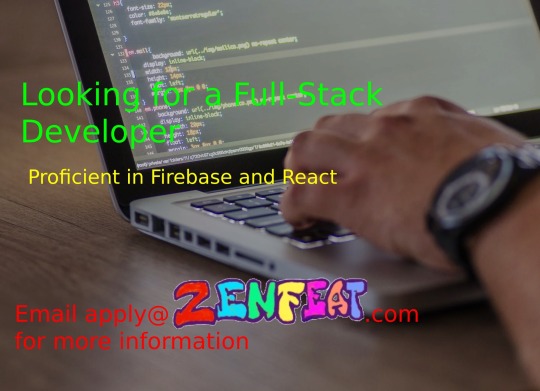
Looking for someone who could help out on a personal project. Killer project and a fun time you will have. ANYONE OUT THERE TO HELP ???
#full stack developer#full stack web development#full stack software developer#web development#web developers#reactjs#firebase#personal project#project management#software development#software developers#software developer#software engineering#jobs#jobseekers#jobposting#jobsearch
1 note
·
View note
Note
I went scrolling through anti ao3 tags and blogs because I was bored and not doing the shit I need to do and you know for a group of people who every year twice a year throw such hissy fits you’d think they’d at least have a point, but all their arguments make no sense(except their one main one that they almost never use?--why??) Like ok, there is one argument for why people shouldn’t give money to ao3, and that is the argument that ao3 is bad website because it has bad policies and refuses to moderate. I disagree, but ultimately if someone thinks that ao3 should update the TOS and moderate what fan fiction they allow, it makes sense that that person would be against the site making money because… well they are against the sites founding principles, I’m not shocked they don’t want it to succeed.
But the rest of the arguments!? Man they make no sense at all
“They are scamming you there is no way they need that much money”, ”its immoral to give money to ao3 because they already have so much!”, “Even if ao3 was perfect, its ridicuslous to give 100K to a fan fiction site!” — like… maybe I’m the asshole here, but ao3 made about 250,000 this spring, so they make about 500,000 a year… that’s just not that much money! That could what, pay for 10-30 employees at best! And that’s not counting the actual cost of all the shit they currently spend their money on! I get that ao3 is run by unpaid volunteers so antis think that 500K is a lot, but that’s not true! That’s not a lot of money at all! It might be a lot of money for an individual but for a company that’s practically pennies. Wikipedia, which granted is a lot bigger than ao3, with 57,218,269 pages to ao3s 6 million works, makes 155 million to ao3 500,000. According to antis ao3 has over a million in reserve and well according to wikipedia they have net assets of US$240 million. One is clearly more than the other!
I saw someone say that servers should be 1K, which is so stupid and out of touch with eveything I almost died laughing. I had a project using firebase this semester, I created 2 projects within firebase one for my school project and one to dick around and figure out. I accidentally set my test database to a “pay as you go” version instead of a free version. And almost had to pay a thousand dollars for the month! I wasn’t even using that database it was just sitting there but I check my google billing to make sure I wasn’t paying anything and it turns out I was! 150 dollars actually so that sucks! (My fault though)
Also also I keep seeing that its ridiculous and evil to pay the much for a site that “doesn’t improve” but the “doesn’t improve” is referring to A) no changes in TOS, which I don’t want to happen any way so good. B) the fact that it’s still in beta, which I don’t give a fuck about and I don’t understand why I should care. I think antis are dont like that the layout hasn’t changed but I don’t want to the layout to change. Also things come out of beta because they are a commercial product to be sold(this is very simplified), which is why some things come out of beta to waaaay to early and are glitchy as all hell! Ao3 isn’t being sold to me its slowly being built and archiving things that would probably be lost, and it will probably technically be in beta forever, but it doesn't effect me and I don't care. Would it be better if it came out of beta only to continously updated like a lot other shit does. I don't really play video games but I know ppl that do so I know at least once a game came out that didn't really work and people needed to later update shit for it to function and I'd argue thats worse than a functional website just being in beta forever. C) The claim that it hasn’t changed at all, which is just not true! They added the exclude section and eventually added the blocking shit. The blocking took too long to come out, so I guess in this sea of dumb criticism theres at least 1 piece of critism that makes sense. And finally again I don’t want it to change! Every other week we are all bitching that Tumblr or YouTube or Instagram or any other app are needlessly changing the layout or adding shit we don’t want in order to keep up with latest trends, make it more marketable or try and attracted new users. Ao3 is great because its never going to change. Ao3 and Craigslist will always kinda look like ass and I’m ok with that. If it aint broke ¯_(ツ)_/¯
I could keep going but there is no point. I just think they are all so stupid.
--
The thing about beta is the funniest because AO3, like oldschool shit from the 90s, has actual criteria for coming out of beta.
It's not "we've been going for 10 years" or "we want to sell the product": it's "we've checked off all the things on this checklist".
And they still haven't done them all, so it's still in beta.
278 notes
·
View notes
Note
hi hi! love your blog! I am also working on building sites for my portfolio but am a little stumped on how/where to deploy them. would you mind sharing what you are using for deployment? thanks!
Places to Deploy Your Website

Hiya! I know a few places I've tried in the past and some I am yet to try but I know other developers use them!

GitHub pages
GitHub Pages is a free static site hosting service that allows you to publish your website directly from a GitHub repository. It supports HTML, CSS, and JavaScript, as well as Jekyll, a static site generator. I used GitHub pages a lot since I use GitHub to keep all my repositories.
Replit
Replit is a cloud-based development environment that provides an integrated IDE, code editor, and hosting platform all in one place. With Replit, you can easily create and deploy web apps, games, and other projects in multiple programming languages such as Python, HTML, CSS, and JavaScript. I use Replit a lot too for my other much smaller projects that I can’t upload on GitHub to run the program online!
Netlify
Netlify offers a free plan for static site hosting that includes features such as continuous deployment, custom domains, and SSL encryption. It supports HTML, CSS, and JavaScript, as well as serverless functions and other backend technologies.
Heroku
Heroku offers a free plan for hobbyist developers that allows you to deploy up to 5 applications. It supports many languages and frameworks, including Ruby, Node.js, Python, Java, PHP, and Go. Heroku allows free hosting for small applications.
Firebase Hosting
Firebase Hosting is a free service that allows you to host and deploy your web app or static content to a global content delivery network (CDN) with SSL encryption. It supports HTML, CSS, JavaScript, and other static assets. It allows free hosting for small applications.
Surge
Surge is a free static site hosting service that allows you to publish your website with a custom domain or a Surge subdomain. It supports HTML, CSS, JavaScript, and other static assets. Allows free hosting with unlimited bandwidth.

Each of these free deployment options has its own cons such as:
Its lack of server-side functionality
Limited database support
The cost of advanced features
Limited control over the infrastructure
May not be suitable for more complex websites or applications
However, for small projects, I think you’ll be fine with the free options!
Hoped this helps and good luck with your websites’ deployments! 🥰🙌🏾💗

#my asks#codeblr#coding#progblr#programming#studying#studyblr#developer#developers#comp sci#computer science#cs student#cs studyblr#resources#coding resources#deployment#deploy websites#portfolio#deployment websites#tech#web dev
213 notes
·
View notes
Text
27. The Devil
Military setting, fictional politics, vague dehumanization, implied past noncon
AU Masterpost / Previous / Next
“Welcome to Firebase Charlie, Agent Anders.” The commander - Briggs, her file read - greeted him on the tarmac. Professional. Good to know some bases still had respect for their guests.
“I wish it was under better circumstances, Commander.”
He smoothed down his jacket as the helicopter blades spun to a stop. The base was on lockdown; she wasn’t stupid or reckless. Smart. It would make exfil difficult if she didn’t cooperate. The briefcase by his side was a weighty reminder that he didn’t particularly care if she cooperated. So long as he returned to base with what he needed.
“Let’s skip the tour - is your office a secure location?”
“Yessir. This way.”
—
“Mav, if you would get Taskforce 42 members here - ”
“Yes ma’am.” Her aide was good at hiding how he felt about a strange man in his boss’ office. But Anders could feel a prick of suspicion when his eyes lingered on him before he left. Could be trouble.
“Bringing them here might not be a good idea.” Anders set his briefcase down next to a seat in front of her desk. It had recently been cleaned - no files or dust. “Have you confirmed that they’re not compromised?”
“How so?” Her eyes flashed at him, defensive. To be expected - they were her soldiers after all. Anders wouldn’t take lightly to any interrogation of his project’s perfection. He hummed, shrugging.
“Any external communications? Do they confer with your prisoner often?”
“No. As much as it pains me to know their families still think they’re dead, I thought letting them reach out would only incite panic and anger.” Her eyes followed him as he studied her office’s decor. “As for our…prisoner, he’s being kept under guard in the same hospital room as them. We don’t really have the space to keep wholly private rooms here.”
“Was he injured?” Anders was genuinely curious as to the state of the Wolf. He was aware of Smith’s…unorthodox but effective methods of keeping the Wolf on a tight leash. Perhaps he had been slacking, letting the volunteers talk the weakened, malleable dog into escape.
“Yes. Dr. Fritz will brief you in his condition. It’s the reason we called you.”
“Is he responsive?” She wasn’t sharing details. Smith probably had a fun night before leaving for DC.
“Yes. He’s…understandably resistant to help us understand what happened. Both to himself and to my men.”
“Have you considered that he may be a spy? It’s possible the parties involved in what happened to your men needed someone to keep an eye on them.” If Anders had to guess the Wolf couldn’t have left them. If not because of his physical condition, then as a result of his psychological conditioning. A decade at the end of a tight leash would do that to a man. A lost puppy always looking for it’s master.
Pathetic.
“I have considered it.” Her expression darkened. “But he has been confined to his bed since we moved him to the medical ward.”
“Where was he prior?”
“Holding. There was an…incident with some of the taskforce’s old squad mates.” There was a faint flush of embarrassment across her face. “They have since been disciplined and dismissed until further notice, pending the end of lockdown.”
“I’d appreciate the names of those soldiers, commander. We can’t be too careful.”
There was a knock at the door, Mav guiding people into the room. Anders smiled, nodding as Briggs introduced him. He hated acting. The sooner he could get the Wolf back where the project belonged, the happier he would be.
AU Masterpost / Previous / Next
Taglist: @stargeode @genuineformality @i-eat-worlds @light-me-on-pyre
@risk606 @sacredwrath
#whump#military setting#fictional politics#dehumanization#implied past noncon#dogs of war au#as always just lemme know if you wanna be added/removed from the taglist ^_^#anders needs his own tw tbh. ik he’s had a generally minor role but he’s a slimy bastard I don’t like him <- I made him like that#a short one but we need Plot for more whump to happen
9 notes
·
View notes
Text
Ship Mobile Fast
Ship your AI apps in days, not weeks.
Save weeks of development time with our React Native Expo Boilerplate. In App Purchases, Open AI, Anthropic, Replicate, Fal AI, GlueStack, AI Proxy Backend, Firebase, Supabase, Admob, and more.
Ship Mobile Fast AI Wrapper is Live!🔥
For those who want to build AI applications…
Now, you can create the apps you envision in just 1-2 days.😎
Integrations with OpenAI, Anthropic, Replicate, and Fal AI. Protect your API keys from being stolen with AI Proxy Backend.
*
Pro (Best for Casual Apps):
In App Purchases (RevenueCat) Google Mobile Ads Authentication Flow Onboarding Flow Push Notifications Multi Language Support Error Tracking App/User Analytics Lifetime Updates Private Discord Channel Access Supabase⚡️ GlueStack Version StyleSheet Version
*
AI Wrapper (Best for AI Projects):
In App Purchases (RevenueCat) Google Mobile Ads Authentication Flow Onboarding Flow Push Notifications Multi Language Support Error Tracking App/User Analytics Lifetime Updates Private Discord Channel Access Firebase🔥 AI Proxy Backend (API Keys Secured🔒) Open AI & Anthropic Replicate AI & Fal AI Ready-to-Use AI Templates
*
Ship Mobile Fast: https://shipmobilefast.com/?aff=1nLNm
Telegram: ahmetmertugrul
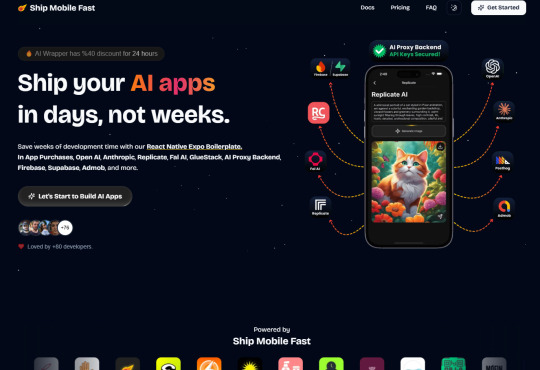
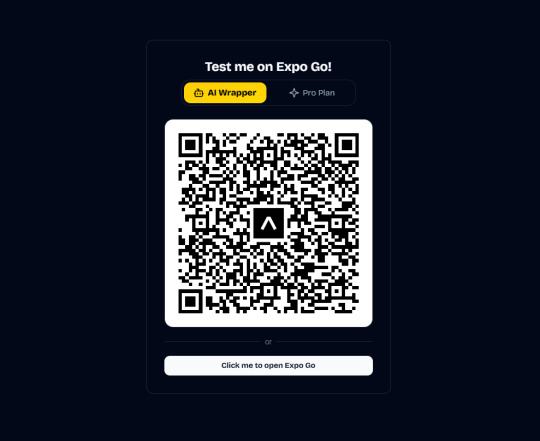
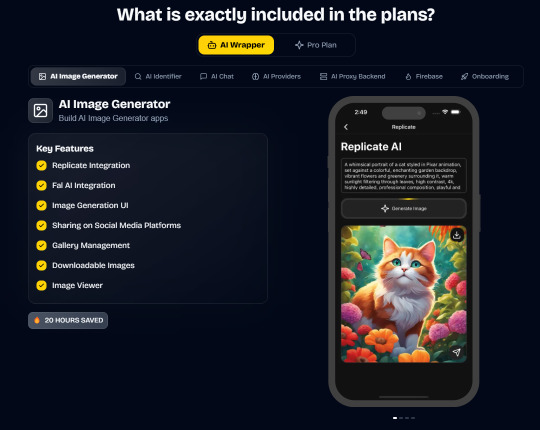
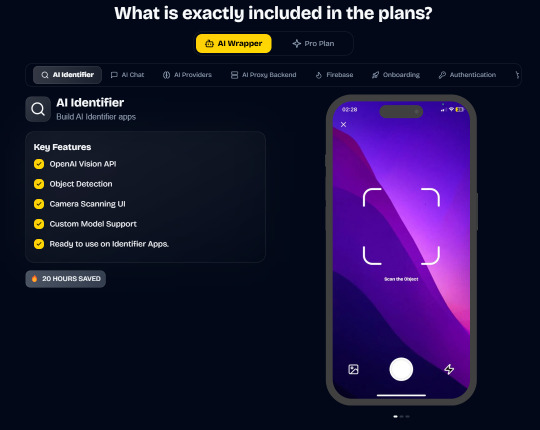
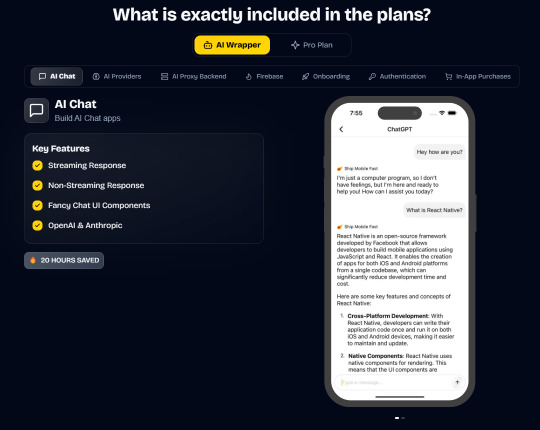
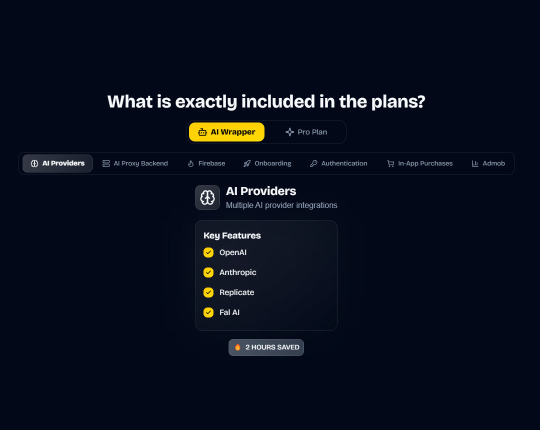
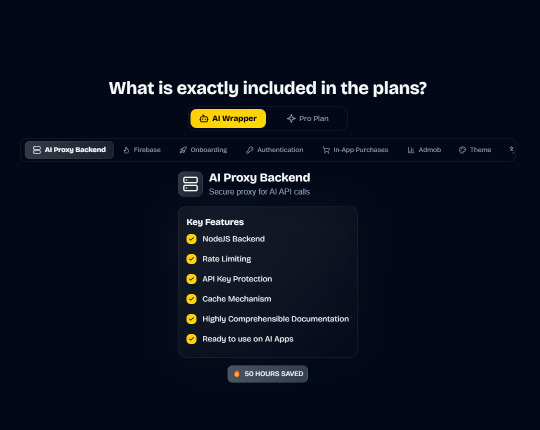
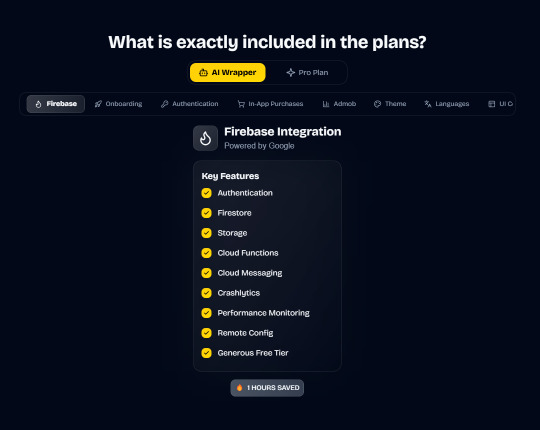
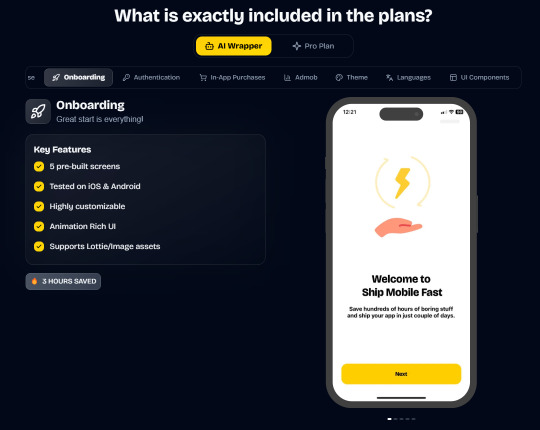


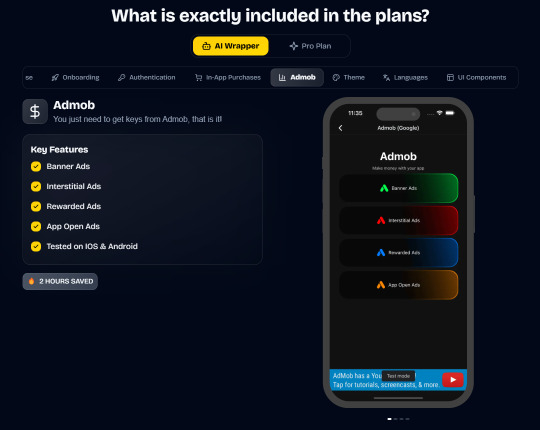
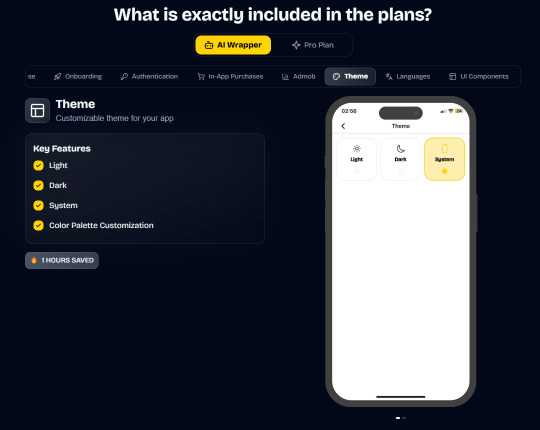
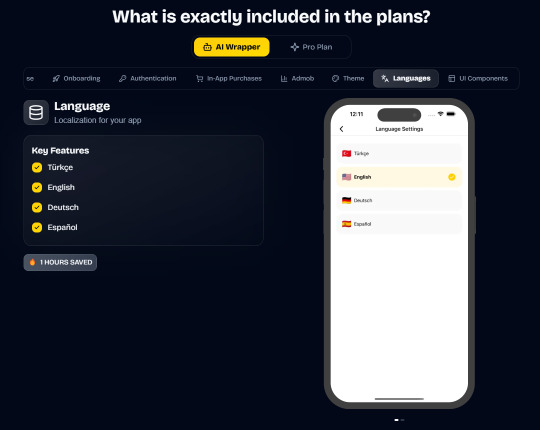
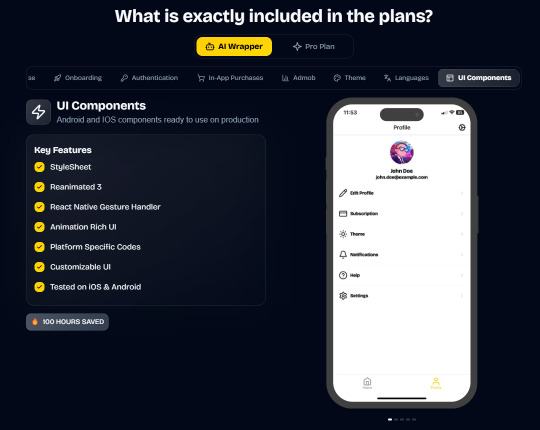
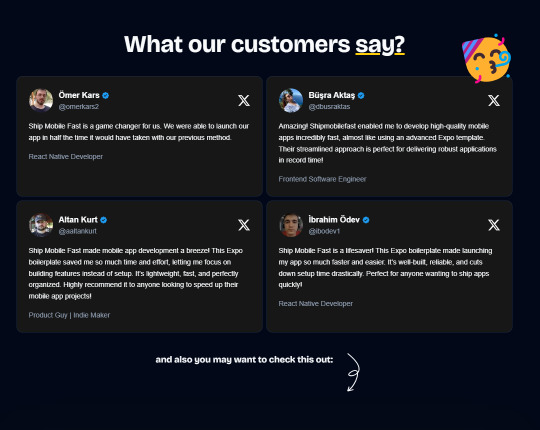
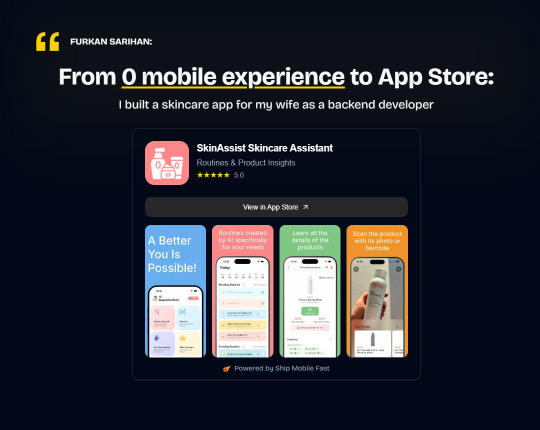
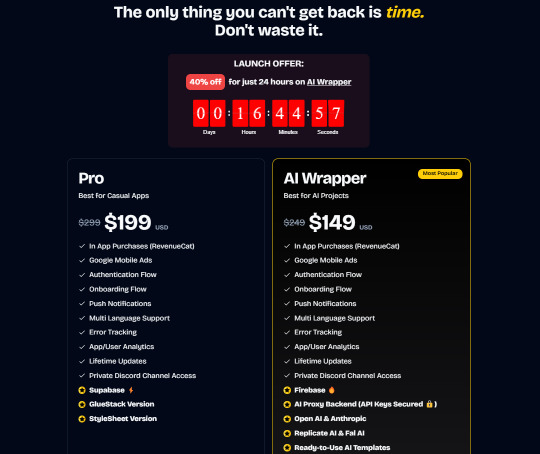
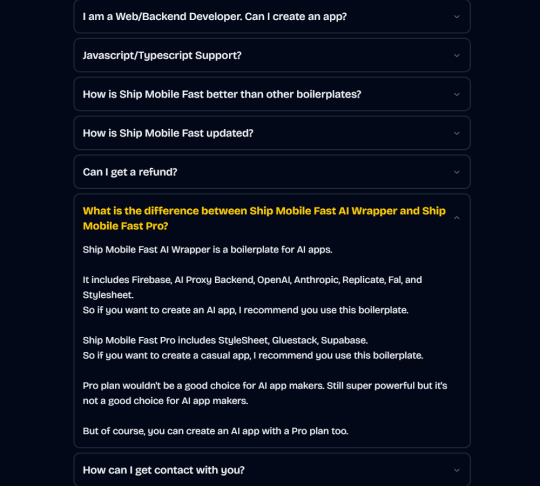
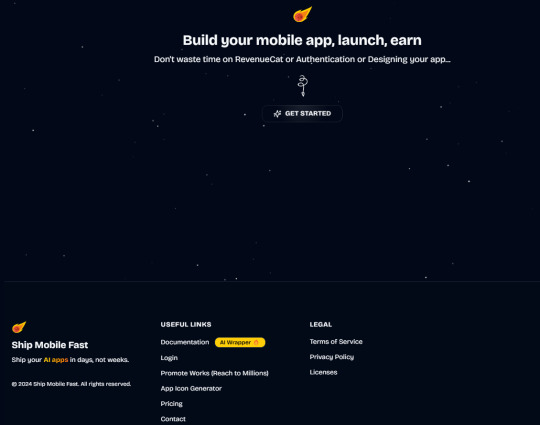
#ai#app#ship#mobile#fast#openai#claude#deepseek#proxy#api#admob#ads#firebase#supabase#falai#backend#ui#ux#replicate#revenuecat#google#expo#boilerplate#template#wrapper
2 notes
·
View notes
Text
Education_Developer Project Lifecycle
I see a lot of people here on codeblr want to start some project but, not really know the best way to get started. To rectify this, hear is my very in depth guide on how to get started. Read this entire post (some of these are started early but its milestone is later).
Note, I highly suggest the use of Github and will be referencing some things that are specific to it (like Wikipedia pages). If you prefer some other method that's fine just be aware you may be making your life harder than it needs to be.
Milestone 1: Form Teams
Find your people, exchange contact information and determine a time to meet up, consistently. If you are working solo, ignore some of the instructions for this section. That is not to say ignore the parts about consistency and time management. In fact, because you are working solo that should be even more important.
At the first meeting establish chat service (teams, slack, google chat, discord). Establish the frequency of the meetings and how often everyone should check their messages (ex: every 24 hours). Discuss the options about the project.
Platform: Android, django, iOS, react native, etc.
IDE: Xcode, WebStorm, VSCode, etc. Note that modern IDEs now have built-in methods for sharing your editor view with teammates: code together, code with me, etc.
Backend: firebase, postgresql, not needed, etc.
Libraries
APIs you will access
Package manager: npm, yarn, gradle, etc.
Finally, discuss the roles you all want on the team, what should one person focus on, who is the manager, editor, client rep, tester, researcher, repo master, master of specific tech, analyst etc.
Deliverables:
Add a wiki page (or more) to your repo titled "Team Organization" and list there the decisions you made from above, along with any pother pertinent information for the team.
Add a page to your wiki titled "Project Description" which should be kept updated as you make decisions about your project. It should contain these sections:
Description: a short description of your project,
Technologies: a list of the technologies you plan to use: frameworks, libraries, hosting services, etc.
Client: your client's name and contact info, if you have one, otherwise just say "Startup."
Milestone 2: Personas and User Stories
If you have a client who wants you to build the app, or you have identified a group of users for your app, then try to meet with them. Ask them what they do? (that is relevant to why they will use the app), why they want the app? how do they currently do the things they want the app to do? etc. If this is a startup answer those questions and more.
The point of this section is to better understand the users of this website. You need to make personas and user stories and record them so that you can reference them as you complete this project. It is very easy to loose sight of who will be using your product and assume they know more than they actually do.
Deliverables:
Add at least three personas to your wiki. These should cover 3 distinct user-types for your app. Each Persona must have a name, photo, and personal history.
Add a "User Stories" wiki page with at least 9 user stories covering the most common use cases for your app. They should all be of the form: As <the name of one of your personas> I want a <feature> so that I can <satisfy a need>.
Milestone 3: Design
For those that are more artsy than everyone else, now is your time to shine. Use a tool like Pencil, figma, justinmind, balsamiq, mockflow.com to design your product.
Your design should include:
An image for each of the major screens and dialogs of your app. Show all the widgets in their proper placement. Name each screen and write some text to explain how actions in one screen will lead to other screens.
In the case of a widget-free apps, you should include diagrams for all the major 'areas', animation stills that detail the most common animations and game mechanics (for example, Super Mario would have a set of drawings showing Mario jumping, punching up, and landing on a Goomba's head), as well as story boards if they are more relevant to your game.
A goal of the design is for you to think about the usability of your app. Try to 'use' the app in your mind: simulate how a user might use the app. Printing the screens into sheets of paper of the correct size and shuffling them as you pretend to use the app is a very common way to test the usability.
Another goal is to save you time. Remember that making a change now, like adding or deleting a screen, is a thousand times easier than if you wait until after you have written the code.
Deliverable: Add one page to your wiki called "Design" and add the images of your design here, along with some textual description of each screen and what it is used for.
Milestone 4: Requirements
This will be the main requirements document for your project. If you were charging a client for your work, this document would form part of that contract, specifying exactly what features your software will implement. The other part of the contract would be the payment details.
The document includes the design you made before (so, embed or add links to those images) but extends on that with detailed descriptions of all the desired features.
You will also mark each feature with one of:
Required: Core functionality of the app. Must have these for it to even start working.
Desired: Added functionality, usability, features, cosmetic features.
Aspirational: Other cool stuff you would like to add
Remember: all good programmers should understate what can be done and then over deliver. If you think something is going to take you 4 weeks, tell the client it will take 8. Then, when it inevitably takes you 6 weeks, you will seem ahead of schedule. On a similar note, if the client is asking for a lot of shit, say no. Now is not the time to be a people pleaser. If you want to please them, do it as a surprise addition, after basic functionality has been achieved.
Roughly the required features are those that need to get done first before anything else can even get started: things like logins, navigation menu, connection to backend, etc. They lay the foundation for building the app. An app that only implements the required features will at most get a passing grade in the class: 70.
The desired features are what make your app worth using. They make the app functional, attractive, and easy to use. Roughly, an app that implements all the desired features gets a 90 in the class.
The aspirational features make your app a professional-quality app. Implementing some of these moves it towards 100.
Deliverables:
Make a Requirements wiki page and list your requirements there.
Each item should succinctly explain a feature.
Each one will have a number. You can add sub-numbering, 1.1, 1.2, 1.2.1, etc. if you want.
Each one will be marked as either: Required, Desired, or Aspirational.
Add all the Proof of Concept Issues to your GitHub Issues with label:enhancement, milestone:Proof Of Concept. These are what you will implement first.
Milestone 5: Research
As a developer, you need to be intimately familiar with the technologies you are or could be using. You need to understand the pros, cons, and requirements of each library and platform that is relevant to your project. Thus, you need to be up to date on technology and, since technology seems to be always changing, this will be something you need to do throughout your career.
Specifically, you need to
Know about the various platforms available to you: their options and limitations.
Know about the various libraries that you can use to make your work easier.
Download, install, and build sample 'Hello world' apps using the most promising technologies. It is not enough to just read about it, you have to do it in order to learn.
Learn how to use the specific framework+libraries you choose to use for the project by building little apps with them.
Learn to use your package manager.
All of the above needs to be done before you start coding together with your team. Do not assume your teammates will teach you. You are responsible for learning.
This milestone will take a lot of time and work, which is why you should start working on this milestone as soon as that first meeting occurs where you discussion options.
Deliverable: Create a separate repo (I suggest naming it research-<projectname>) where you will place your sample project built using your team's chosen framework. The project will be more than just "hello world", or cut-n-paste from a tutorial. Start with tutorial code but, add you own code to their code. The app should have some minimal interactivity: user enters some data, program does something with it and shows the user.
Milestone 6: Architecture
Now that you are comfortable working with your chosen framework, you will write a document that roughly describes the big parts of your code. The structure will depend a lot on your chosen framework.
If you are building a webapp then you will probably list the set of database tables (models, for example: rails:ActiveRecords, meteor:Collections, etc), the set Views, and the set of Controllers. For webapps you should also list the of your URLs app, and what lives at each one.
If you are building an Android app then you will list your Activities or Fragments, along with their corresponding Views, as well as your model Java classes. You will also list your database tables (firebase, sqlite, localStorage, etc) if you need persistence, which almost everyone does.
Think deeply about your design. Go over the most common use-cases and check how those will be accomplished in code: which methods will be invoked? do the methods have references to all the objects they need in order to perform their job? Remember that your main goal is *de-coupling** the various classes: the fewer references (method arguments, global variables) they need, the easier your life will be.
Deliverable: Add architecture document to the wiki containing:
List all the languages/frameworks/libraries/services/APIs you plan to use. Explain how they will tie together. For example: This will be a native Android app written in Kotlin, using the android.graphics library, using firebase real-time database for cloud data, and firebase authentication for user accounts.
What package/build manager will you use? npm, gradle, yarn, flutter, pipenv, etc.
List what each person will work on. Everyone must make significant code contributions, or they will fail the class, see Syllabus.
Make sure all the images (if any) are embedded in the wiki page and hosted at GitHub.
Make sure the wiki page is easy to read.
If you are building a webapp:
Deployment How will you deploy? Which hosting provider(s)? Automation? Scripts? Explain.
Are you using Virtual Machines (vmware, vbox, etc) or Containers (docker) for development or deployment? Explain.
Is it a SPA or traditional? or mix? Explain. (My web application development lectures explain the difference.)
List of URLs you will implement. Explain any search arguments in English. Link (actual hyperlink) each URL to the page it shows in your Detailed Design milestone.
If implementing a REST API, document it. List all methods, parameters, and give English description of what they do.
The Views of your app. Embed the images from your Design Milestone. Typically, a webpage includes multiple views. For example, this webpage has a Header, Menu, and Content views (at least).
The Database schema: set of tables/documents with list of attributes and their types. Describe each table and attribute in English.
List of common queries you expect will be needed. Do any of then need to join tables?
If you are building a mobile or desktop app:
Release: How will you create and deliver a binary to testers? Explain. Note that the testers include us (the teachers of this class, when we grade your app). You must deliver a simple to install app: double-click to install.
Are you using Virtual Machines (vmware, vbox, etc) or Containers (docker) for development? If so, explain.
The Models for your app. These could be UML class diagrams, or just models with attributes (with type) and descriptions (in English).
How will your app maintain state? in memory? or database? or both? Note this in your Model Classes.
If you are using a db-backend (say firebase) then include the Database schema: set of tables/documents with list of attributes and their types.
List of common queries you expect will be needed. Do any of then need to join tables?
The Views of your app: name, describe. Embed the images from your Design Milestone. Typically, one page in the app is composed of multiple View elements.
Below will be complete as I do for my Capstone project.
Source Control
Ethical, Legal, and Security Considerations
Proof of Concept (PoC)
PoC Demo
Testing
Beta Release
RC1 Release
Quality Assurance
Website
1.0 Release
Final Demo Video
#erozcodes#studyblr#codeblr#education#self study#production cycle#scrum#devlifecycle#this shit can be so painful and I hope this can help
3 notes
·
View notes
Text
100 Days Of Code Challenge - day 3/100
10/01/2024
Day 3:
I completed the to-do list project, and it was very helpful for practicing React states and using Firebase for the database 🚀.
I've been looking for information to start making a Trello clone to add to my web portfolio (if anyone has any project suggestions, leave me a comment :D) 💡
#100daysofcode#coder#coderlife#codeblr#coding#developers & startups#developers#html5#development#javascript#html#programming#latest tech#web developers#web development#technology#tech#study notes#geek#reactnative#reactjs#studygram#learning#studyblr#computer science#techcrunch#virtual reality#github
11 notes
·
View notes
Text
Ludo Game Development Company

Ludo is a beloved board game that has easily moved into the online world. Its fun and exciting gameplay makes it perfect for mobile and online platforms, attracting players of all ages. Enixo Studio is a top game development company that specializes in creating engaging Ludo games, which have thrilled millions of players.
Successful Ludo Games by Enixo Studio
Enixo Studio has released several popular Ludo games, including Ludo Bazi, Ludo Pasa, Ludo Premium, Ludo Jungle, Ludo Crash, Ludo Pot, Ludo Prime, Ludo Grand, Ludo Pay, and Ludo Peso.
Key Features of Enixo’s Ludo Games
Enixo Studio focuses on providing a fantastic gaming experience. Here are some great features of their Ludo games:
Multiplayer Mode: Play with friends or other players from around the world. You can play with 2 to 4 players.
Chat Functionality: Talk to other players using the built-in chat. You can send emojis and stickers to make the game more fun.
User-Friendly Interface: The design is easy to understand for players of all ages, with simple menus and settings.
In-Game Purchases: Unlock new skins, themes, and power-ups. You can buy coins or gems to enhance your game.
Multiple Variations: Choose from different game modes like Classic, Quick Play, and Tournament, each with its own rules.
Engaging Graphics: Enjoy colorful and high-quality graphics that make the game enjoyable. There are fun animations for rolling dice and moving pieces.
Real-Time Leaderboards: Check your rankings globally and among friends. Daily and weekly leaderboards keep the competition alive.
Secure Payment Gateway: Safe and easy transactions for in-game purchases with different payment options.
Social Media Integration: Share your achievements and game invites on social media. You can log in easily using your Facebook or Google account.
Push Notifications: Stay informed about game events, challenges, and new features. Get reminders for friends to join or finish matches.
Customizable Avatars: Create and personalize your avatars with different clothing, accessories, and colors.
Offline Mode: Play against AI when you’re not online. It’s perfect for solo practice and fun.
Daily Rewards: Log in every day to earn bonuses, coins, and special items through daily challenges.
User Support: Get help within the app for any issues or questions. There are FAQs and guides to assist new players with the game rules.
Technologies Used in Ludo Game Development
Enixo Studio uses the latest technologies to ensure their Ludo games are robust, responsive, and enjoyable. Some of the technologies include:
Unity Engine: For amazing 2D and 3D graphics.
Socket.io: For real-time communication in multiplayer games.
MEAN Stack: For a strong and scalable backend.
React Native: For developing mobile apps that work on multiple platforms.
Firebase: For cloud storage and real-time database features.
Ludo Game Development Companies in India
Here’s a list of cities where you can find talented developers:
Ludo Game Development Companies in Delhi
Ludo Game Development Companies in Noida
Ludo Game Development Companies in Jaipur
Ludo Game Development Companies in Lucknow
Ludo Game Development Companies in Patna
Ludo Game Development Companies in Indore
Ludo Game Development Companies in Gurgaon
Ludo Game Development Companies in Surat
Ludo Game Development Companies in Bengaluru
Ludo Game Development Companies in Chennai
Ludo Game Development Companies in Ahmedabad
Ludo Game Development Companies in Hyderabad
Ludo Game Development Companies in Mumbai
Ludo Game Development Companies in Pune
Ludo Game Development Companies in Dehradun
Conclusion
Enixo Studio is an excellent choice for anyone looking to create exciting and popular Ludo games. With a proven track record of successful projects and a commitment to the latest technologies, they can turn your Ludo game ideas into reality.
If you want custom Ludo games, contact Enixo Studio at enixo.in, email us at [email protected], or WhatsApp us at +917703007703. You can also check our profiles on Behance or Dribbble to see our work. Whether you’re looking for a simple game or a complex multiplayer platform, Enixo Studio has the expertise to make it happen.
#ludo game development services#ludo source code#game development#ludo money#zupee#ludo supreme#ludo bazi#ludo app make#ludo cash#ludo game development company#best ludo app#gamedevelopment#game#game art#game design#gamedev#gamers of tumblr#game developers#games#ludo studio#ludo game development#ludo game developers
3 notes
·
View notes
Text
CPE312 Software Design and Engineering
EduConnect: PIT Software Presentation
Week 10
October 24-25, 2024
ִֶָ𓂃 ࣪˖ ִֶָ🐇་༘࿐
Yesterday, we had our PIT software presentation scheduled during our Software Design and Engineering class. Leading up to the presentation, I felt a bit nervous because I hadn’t completed as many layout designs as I’d hoped. I realized I’d also forgotten to upload some files to GitHub. The night before, I was cramming to finish the system's layout and ended up staying up all night. I also felt some personal stress that affected my focus, so I decided to play some music to help me keep going and complete my work.
During our presentation, our leader gave a brief introduction to our system, called 'EduConnect.' This platform connects students with tutors, who can be other students or instructors. We showcased the main navigation functions, including signing in, creating accounts, the dashboard, subject room, searching for instructors, messaging, profiles, payments, and settings. We demonstrated the backend using Firebase, which handles account management like adding and deleting accounts directly through the database. We also shared some of the errors we encountered and how we planned to fix them. Our instructor provided valuable guidance and gave us feedback, which led to a promising score. He then advised us on areas to improve and asked us to present again the next day with the adjustments made.
Today, we returned to present our updated system to improve our score. Our leader, Tejano, made significant improvements to the backend, such as adding error handling for short passwords, handling invalid credentials, and optimizing the runtime. His leadership included regular updates and reminders, keeping our roles well-coordinated and helping me identify parts of the layout that needed fixing or adding. With his support, we were able to finish the presentation successfully. I’m grateful for his patience and dedication to the project, which motivated all of us to stay on track. We wrapped up the presentation and were relieved to have done our best.
ִֶָ𓂃 ࣪˖ ִֶָ🐇་༘࿐




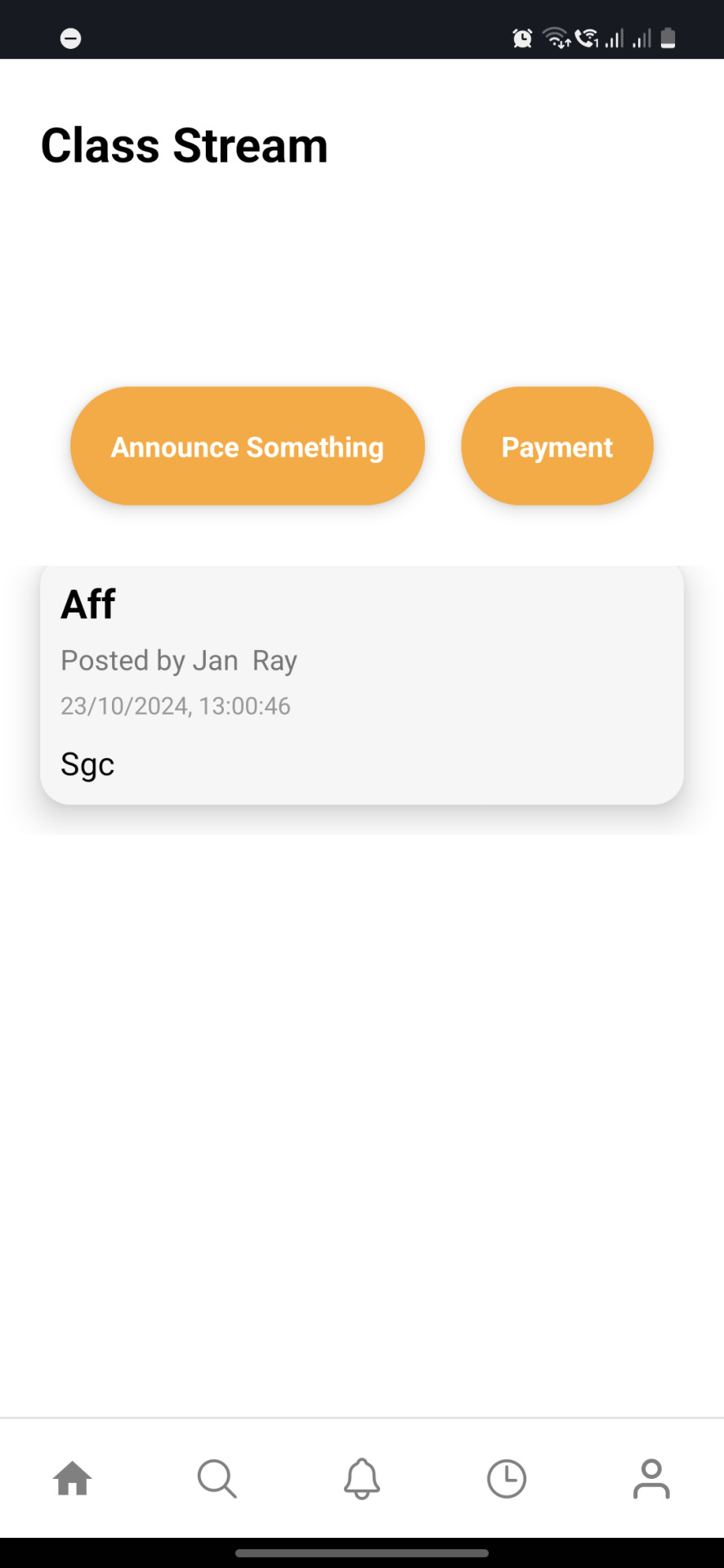

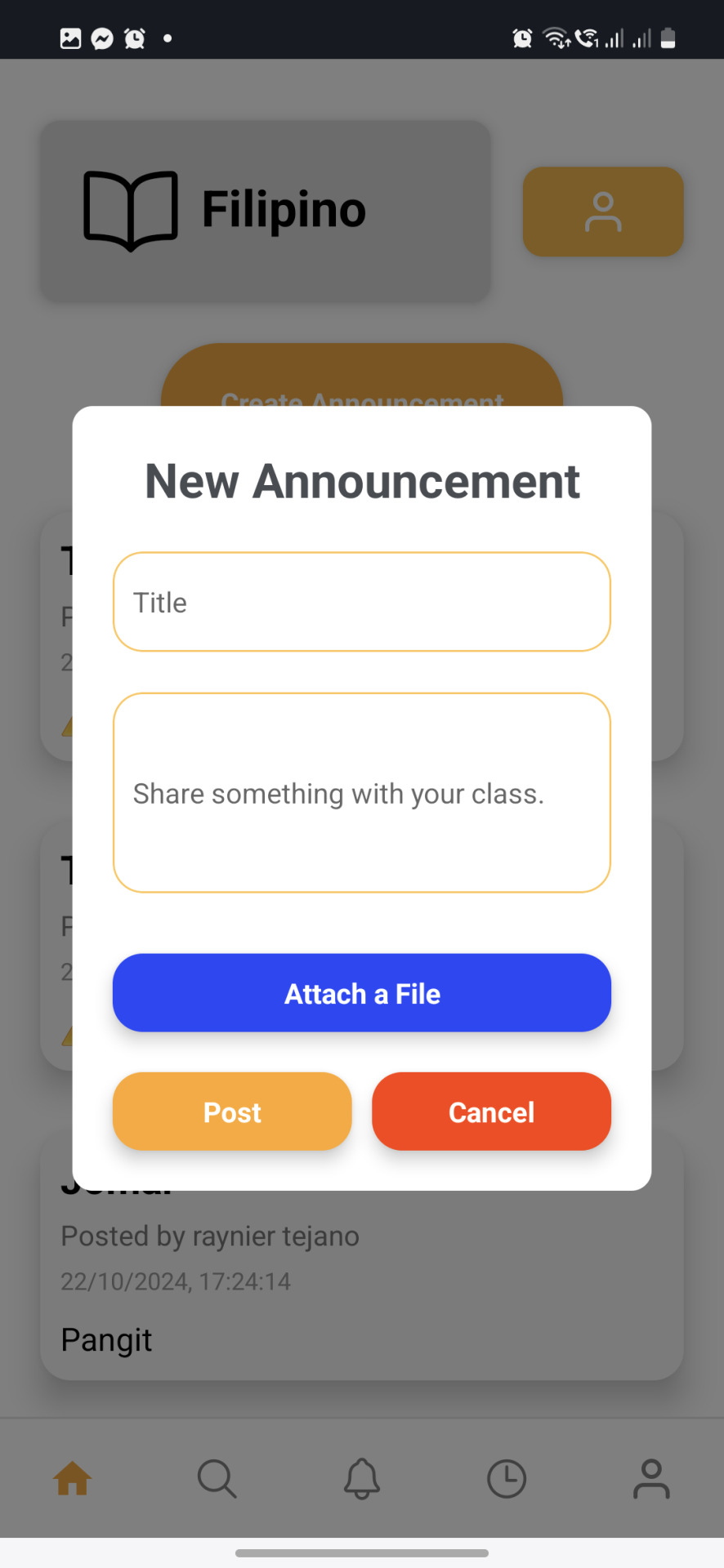
2 notes
·
View notes
Text
Gemini Code Assist Enterprise: AI App Development Tool
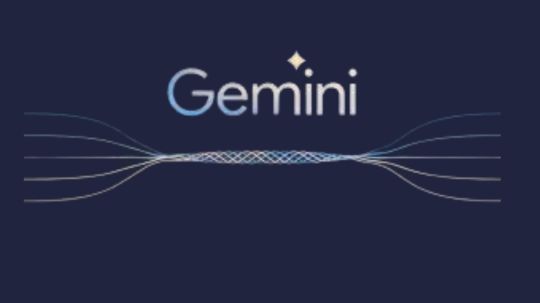
Introducing Gemini Code Assist Enterprise’s AI-powered app development tool that allows for code customisation.
The modern economy is driven by software development. Unfortunately, due to a lack of skilled developers, a growing number of integrations, vendors, and abstraction levels, developing effective apps across the tech stack is difficult.
To expedite application delivery and stay competitive, IT leaders must provide their teams with AI-powered solutions that assist developers in navigating complexity.
Google Cloud thinks that offering an AI-powered application development solution that works across the tech stack, along with enterprise-grade security guarantees, better contextual suggestions, and cloud integrations that let developers work more quickly and versatile with a wider range of services, is the best way to address development challenges.
Google Cloud is presenting Gemini Code Assist Enterprise, the next generation of application development capabilities.
Beyond AI-powered coding aid in the IDE, Gemini Code Assist Enterprise goes. This is application development support at the corporate level. Gemini’s huge token context window supports deep local codebase awareness. You can use a wide context window to consider the details of your local codebase and ongoing development session, allowing you to generate or transform code that is better appropriate for your application.
With code customization, Code Assist Enterprise not only comprehends your local codebase but also provides code recommendations based on internal libraries and best practices within your company. As a result, Code Assist can produce personalized code recommendations that are more precise and pertinent to your company. In addition to finishing difficult activities like updating the Java version across a whole repository, developers can remain in the flow state for longer and provide more insights directly to their IDEs. Because of this, developers can concentrate on coming up with original solutions to problems, which increases job satisfaction and gives them a competitive advantage. You can also come to market more quickly.
GitLab.com and GitHub.com repos can be indexed by Gemini Code Assist Enterprise code customisation; support for self-hosted, on-premise repos and other source control systems will be added in early 2025.
Yet IDEs are not the only tool used to construct apps. It integrates coding support into all of Google Cloud’s services to help specialist coders become more adaptable builders. The time required to transition to new technologies is significantly decreased by a code assistant, which also integrates the subtleties of an organization’s coding standards into its recommendations. Therefore, the faster your builders can create and deliver applications, the more services it impacts. To meet developers where they are, Code Assist Enterprise provides coding assistance in Firebase, Databases, BigQuery, Colab Enterprise, Apigee, and Application Integration. Furthermore, each Gemini Code Assist Enterprise user can access these products’ features; they are not separate purchases.
Gemini Code Support BigQuery enterprise users can benefit from SQL and Python code support. With the creation of pre-validated, ready-to-run queries (data insights) and a natural language-based interface for data exploration, curation, wrangling, analysis, and visualization (data canvas), they can enhance their data journeys beyond editor-based code assistance and speed up their analytics workflows.
Furthermore, Code Assist Enterprise does not use the proprietary data from your firm to train the Gemini model, since security and privacy are of utmost importance to any business. Source code that is kept separate from each customer’s organization and kept for usage in code customization is kept in a Google Cloud-managed project. Clients are in complete control of which source repositories to utilize for customization, and they can delete all data at any moment.
Your company and data are safeguarded by Google Cloud’s dedication to enterprise preparedness, data governance, and security. This is demonstrated by projects like software supply chain security, Mandiant research, and purpose-built infrastructure, as well as by generative AI indemnification.
Google Cloud provides you with the greatest tools for AI coding support so that your engineers may work happily and effectively. The market is also paying attention. Because of its ability to execute and completeness of vision, Google Cloud has been ranked as a Leader in the Gartner Magic Quadrant for AI Code Assistants for 2024.
Gemini Code Assist Enterprise Costs
In general, Gemini Code Assist Enterprise costs $45 per month per user; however, a one-year membership that ends on March 31, 2025, will only cost $19 per month per user.
Read more on Govindhtech.com
#Gemini#GeminiCodeAssist#AIApp#AI#AICodeAssistants#CodeAssistEnterprise#BigQuery#Geminimodel#News#Technews#TechnologyNews#Technologytrends#Govindhtech#technology
2 notes
·
View notes
Text
20 Best Android Development Practices in 2023
Introduction:
In today's competitive market, creating high-quality Android applications requires adherence to best development practices. Android app development agencies in Vadodara (Gujarat, India) like Nivida Web Solutions Pvt. Ltd., play a crucial role in delivering exceptional applications. This article presents the 20 best Android development practices to follow in 2023, ensuring the success of your app development projects.
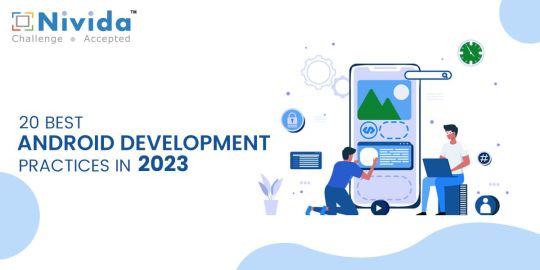
1. Define Clear Objectives:
Begin by defining clear objectives for your Android app development project. Identify the target audience, the app's purpose, and the specific goals you aim to achieve. This clarity will guide the development process and result in a more focused and effective application.
2. Embrace the Material Design Guidelines:
Google's Material Design guidelines provide a comprehensive set of principles and guidelines for designing visually appealing and intuitive Android applications. Adhering to these guidelines ensures consistency, enhances usability, and delivers an optimal user experience.
3. Optimize App Performance:
Performance optimization is crucial for user satisfaction. Focus on optimizing app loading times, minimizing network requests, and implementing efficient caching mechanisms. Profiling tools like Android Profiler can help identify performance bottlenecks and improve overall app responsiveness.
4. Follow a Modular Approach:
Adopting a modular approach allows for easier maintenance, scalability, and code reusability. Breaking down your app into smaller, manageable modules promotes faster development, reduces dependencies, and enhances collaboration among developers.
5. Implement Responsive UI Designs:
Designing a responsive user interface (UI) ensures that your app adapts seamlessly to various screen sizes and orientations. Utilize Android’s resources, such as ConstraintLayout, to create dynamic and adaptive UIs that provide a consistent experience across different devices.
6. Prioritize Security:
Android app security is of paramount importance. Employ secure coding practices, authenticate user inputs, encrypt sensitive data, and regularly update libraries and dependencies to protect your app against vulnerabilities and potential attacks.
7. Opt for Kotlin as the Preferred Language:
Kotlin has gained immense popularity among Android developers due to its conciseness, null safety, and enhanced interoperability with existing Java code. Embrace Kotlin as the primary programming language for your Android app development projects to leverage its modern features and developer-friendly syntax.
8. Conduct Thorough Testing:
Testing is crucial to ensure the reliability and stability of your Android applications. Employ a combination of unit testing, integration testing, and automated UI testing using frameworks like Espresso to catch bugs early and deliver a robust app to your users.
9. Optimize Battery Consumption:
Battery life is a significant concern for Android users. Optimize your app's battery consumption by minimizing background processes, reducing network requests, and implementing efficient power management techniques. Android's Battery Optimization APIs can help streamline power usage.
10. Implement Continuous Integration and Delivery (CI/CD):
Adopting CI/CD practices facilitates frequent code integration, automated testing, and seamless deployment. Tools like Jenkins and Bitrise enable developers to automate build processes, run tests, and deploy app updates efficiently, resulting in faster time-to-market and improved quality.
11. Leverage Cloud Technologies:
Integrating cloud technologies, such as cloud storage and backend services, can enhance your app's scalability, performance, and reliability. Services like Firebase offer powerful tools for authentication, database management, push notifications, and analytics.
12. Ensure Accessibility:
Make your Android app accessible to users with disabilities by adhering to accessibility guidelines. Provide alternative text for images, support screen readers, and use colour contrast appropriately to ensure inclusivity and a positive user experience for all users.
13. Optimize App Size:
Large app sizes can deter users from downloading and installing your application. Optimize your app's size by eliminating unused resources, compressing images, and utilizing Android App Bundles to deliver optimized APKs based on device configurations.
14. Implement Offline Support:
Provide offline capabilities in your app to ensure users can access essential features and content even when offline. Implement local caching, synchronize data in the background, and notify users of limited or no connectivity to deliver a seamless user experience.
15. Implement Analytics and Crash Reporting:
Integrate analytics and crash reporting tools, such as Google Analytics and Firebase Crashlytics, to gain insights into user behaviour, identify areas for improvement, and address crashes promptly. This data-driven approach helps in refining your app's performance and user engagement.
16. Keep Up with Android OS Updates:
Stay up to date with the latest Android OS updates, new APIs, and platform features. Regularly update your app to leverage new functionalities, enhance performance, and ensure compatibility with newer devices.
17. Provide Localized Versions:
Cater to a global audience by providing localized versions of your app. Translate your app's content, user interface, and notifications into different languages to expand your user base and increase user engagement.
18. Ensure App Store Optimization (ASO):
Optimize your app's visibility and discoverability in the Google Play Store by utilizing appropriate keywords, engaging app descriptions, compelling screenshots, and positive user reviews. ASO techniques can significantly impact your app's download and conversion rates.
19. Follow Privacy Regulations and Guidelines:
Adhere to privacy regulations, such as GDPR and CCPA, and ensure transparent data handling practices within your app. Obtain user consent for data collection, storage, and usage, and provide clear privacy policies to establish trust with your users.
20. Regularly Update and Maintain Your App:
Continuously monitor user feedback, track app performance metrics, and release regular updates to address bugs, introduce new features, and enhance user experience. Regular maintenance ensures that your app remains relevant, competitive, and secure.
Conclusion:
Adopting these 20 best Android development practices in 2023 will help Android app development companies in India, create exceptional applications. By focusing on objectives, embracing Material Design, optimizing performance, and following modern development approaches, your Android apps will stand out in the market, delight users, and achieve long-term success. Also by partnering with an Android App Development Company in India (Gujarat, Vadodara) you can leverage their expertise.
#Android App development company in India#Android App development agencies in India#Android App development companies in India#Android App development company in Gujarat#Android App development company in Vadodara#Android App development agencies in Vadodara#Android App development agencies in Gujarat#Android App development companies in Vadodara#Android App development companies in Gujarat
7 notes
·
View notes
Text
Navigating the Full Stack: A Holistic Approach to Web Development Mastery
Introduction: In the ever-evolving world of web development, full stack developers are the architects behind the seamless integration of frontend and backend technologies. Excelling in both realms is essential for creating dynamic, user-centric web applications. In this comprehensive exploration, we'll embark on a journey through the multifaceted landscape of full stack development, uncovering the intricacies of crafting compelling user interfaces and managing robust backend systems.

Frontend Development: Crafting Engaging User Experiences
1. Markup and Styling Mastery:
HTML (Hypertext Markup Language): Serves as the foundation for structuring web content, providing the framework for user interaction.
CSS (Cascading Style Sheets): Dictates the visual presentation of HTML elements, enhancing the aesthetic appeal and usability of web interfaces.
2. Dynamic Scripting Languages:
JavaScript: Empowers frontend developers to add interactivity and responsiveness to web applications, facilitating seamless user experiences.
Frontend Frameworks and Libraries: Harness the power of frameworks like React, Angular, or Vue.js to streamline development and enhance code maintainability.
3. Responsive Design Principles:
Ensure web applications are accessible and user-friendly across various devices and screen sizes.
Implement responsive design techniques to adapt layout and content dynamically, optimizing user experiences for all users.
4. User-Centric Design Practices:
Employ UX design methodologies to create intuitive interfaces that prioritize user needs and preferences.
Conduct usability testing and gather feedback to refine interface designs and enhance overall user satisfaction.

Backend Development: Managing Data and Logic
1. Server-side Proficiency:
Backend Programming Languages: Utilize languages like Node.js, Python, Ruby, or Java to implement server-side logic and handle client requests.
Server Frameworks and Tools: Leverage frameworks such as Express.js, Django, or Ruby on Rails to expedite backend development and ensure scalability.
2. Effective Database Management:
Relational and Non-relational Databases: Employ databases like MySQL, PostgreSQL, MongoDB, or Firebase to store and manage structured and unstructured data efficiently.
API Development: Design and implement RESTful or GraphQL APIs to facilitate communication between the frontend and backend components of web applications.
3. Security and Performance Optimization:
Implement robust security measures to safeguard user data and protect against common vulnerabilities.
Optimize backend performance through techniques such as caching, query optimization, and load balancing, ensuring optimal application responsiveness.
Full Stack Development: Harmonizing Frontend and Backend
1. Seamless Integration of Technologies:
Cultivate expertise in both frontend and backend technologies to facilitate seamless communication and collaboration across the development stack.
Bridge the gap between user interface design and backend functionality to deliver cohesive and impactful web experiences.
2. Agile Project Management and Collaboration:
Collaborate effectively with cross-functional teams, including designers, product managers, and fellow developers, to plan, execute, and deploy web projects.
Utilize agile methodologies and version control systems like Git to streamline collaboration and track project progress efficiently.
3. Lifelong Learning and Adaptation:
Embrace a growth mindset and prioritize continuous learning to stay abreast of emerging technologies and industry best practices.
Engage with online communities, attend workshops, and pursue ongoing education opportunities to expand skill sets and remain competitive in the evolving field of web development.
Conclusion: Mastering full stack development requires a multifaceted skill set encompassing frontend design principles, backend architecture, and effective collaboration. By embracing a holistic approach to web development, full stack developers can craft immersive user experiences, optimize backend functionality, and navigate the complexities of modern web development with confidence and proficiency.
#full stack developer#education#information#full stack web development#front end development#frameworks#web development#backend#full stack developer course#technology
2 notes
·
View notes
Text

🏏📈 Ready to hit a six with your cricket stats? Join me in my new project using #reactnative and #firebase and let's create an app that's both informative and entertaining! 🌟🔥
Are you a cricket fan who loves to keep track of the latest scores and stats? Let's create an app that's both user-friendly and packed with features! 💪🌎
What kind of features would you like to see in a cricket stats app? Comment below and let's make it happen together! 🤩
2 notes
·
View notes
Text
Hari ini dipusingkan dengan mindah project dari codeigniter-mysql. ke google site - firebase. gimana coba itu...
(cont.)

1 note
·
View note